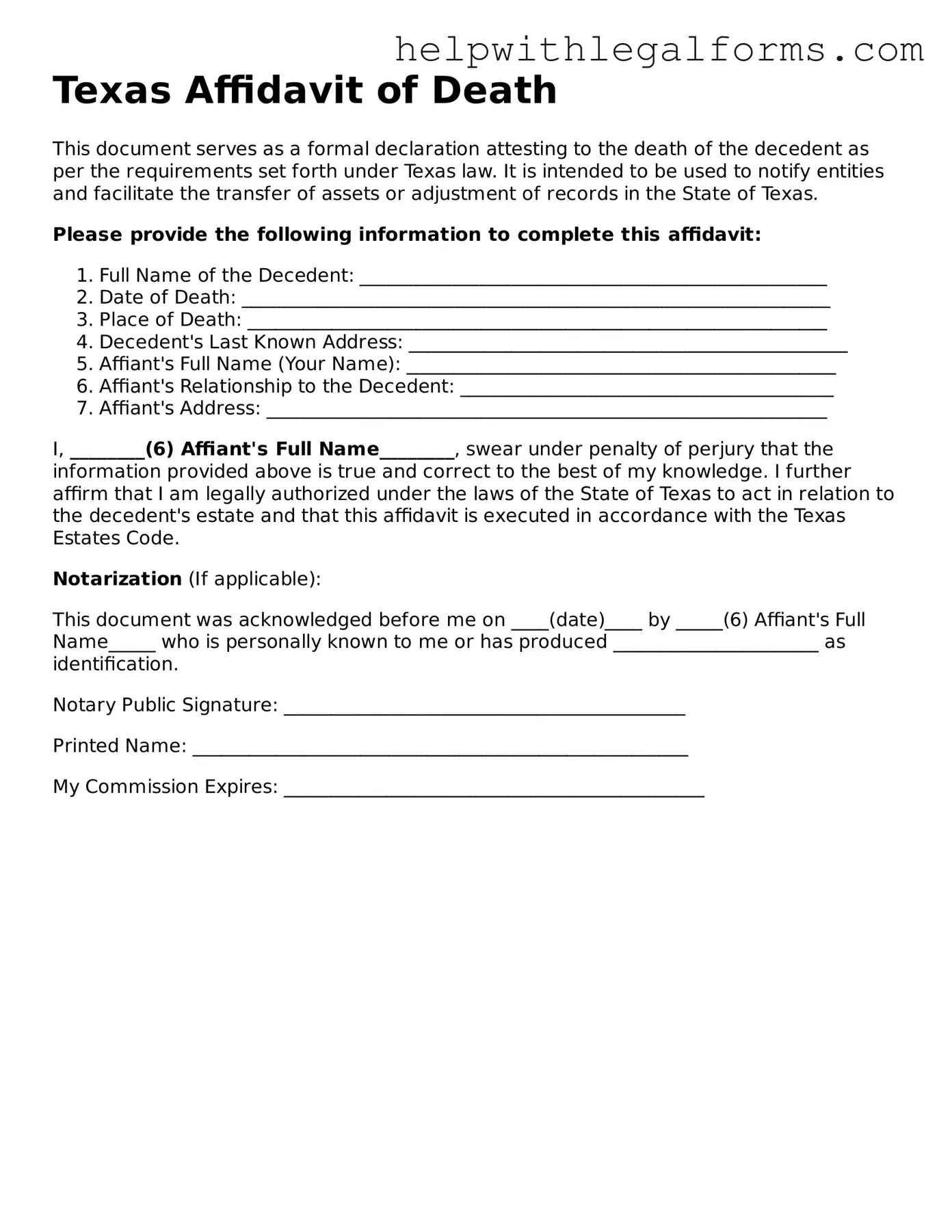What is an Affidavit of Death Form in Texas?
An Affidavit of Death form in Texas is a legal document that formally recognizes the death of an individual. It is often used by family members or inheritors to establish their legal rights or to manage the deceased's assets and liabilities. This document is commonly required to update property records, claim benefits, or to execute the deceased person's will.
Who can file an Affidavit of Death in Texas?
In Texas, typically, a close relative, an heir, or an executor of the deceased’s estate can file an Affidavit of Death. This individual must be over 18 years of age, have knowledge about the decedent's death, and be directly affected by the death regarding property or assets that require the affidavit for legal changes.
What information is needed for the Affidavit of Death?
To complete an Affidavit of Death, you need several key pieces of information including the full name of the deceased, their date of birth, and date of death. Information about the property or assets in question, such as legal descriptions of real estate, vehicle identification numbers, or account numbers, may also be required. Furthermore, the affiant (the person filing the affidavit) must provide their relationship to the deceased and their reason for filing the affidavit.
Where do I file an Affidavit of Death in Texas?
An Affidavit of Death should be filed in the county where the property or assets are located. For real estate, this would be the County Clerk’s office in the county where the property resides. For assets like bank accounts or vehicles, the affidavit may need to be presented to the bank or the Texas Department of Motor Vehicles respectively.
Is there a fee to file an Affidavit of Death in Texas?
Fees for filing an Affidavit of Death can vary by county and type of asset. It's advisable to contact the local County Clerk’s office or the relevant agency handling the asset in question to inquire about the current filing fees. Some offices may accept various payment methods, including cash, checks, or credit cards.
How long does it take for an Affidavit of Death to be processed?
The processing time for an Affidavit of Death can vary widely depending on the county and the complexity of the estate. Generally, once filed, it may take a few days to a few weeks for the document to be officially recorded. However, being in touch with the specific office where you file can provide a more accurate timeline.
Do I need a lawyer to file an Affidavit of Death in Texas?
While it is not required to have a lawyer to file an Affidavit of Death in Texas, consulting with an estate attorney can be beneficial. Legal advice is especially helpful for complex situations, such as large estates, disputes among heirs, or if the deceased did not leave a will. A lawyer can guide you through the process and help ensure that all legal requirements are met.
What happens after the Affidavit of Death is filed?
After the Affidavit of Death is filed, it becomes a part of the public record, and the necessary changes regarding the deceased’s assets can proceed. This might include transferring property titles, accessing bank accounts, or finalizing other financial affairs. It is essential to follow up with the respective agencies or offices to ensure that all actions required after filing the affidavit are completed and that all legal and financial matters are resolved.
